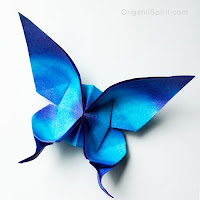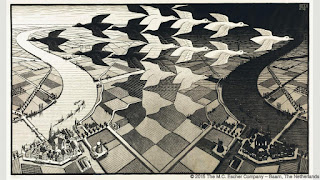Week 2: Math + Art
I think it would be foolish to limit ourselves and not see the opportunities math has in art or art has in math. Nothing is thought of as being strictly “artistic” or “scientific” or “mathematical” anymore.
our forests and all the way to the highest peaks of our mountains.
 Further, Marc Frantz, shows the unity of math and art with his vanishing point theorem, “If two or more lines in the real world are parallel to one another, but not parallel to the picture plane, then they have the same vanishing point. The perspective images of these lines will not be parallel. If fully extended in a drawing, the image lines will intersect at the vanishing point,” (Marc Frantz 2000). Even just reading this article and the definition made me feel like I was back in high school reading a Calculus Textbook even though it is talking about an art concept. After reading his paper, it would be silly for anyone to assume that in this instance, art and mathematics aren't one.
Further, Marc Frantz, shows the unity of math and art with his vanishing point theorem, “If two or more lines in the real world are parallel to one another, but not parallel to the picture plane, then they have the same vanishing point. The perspective images of these lines will not be parallel. If fully extended in a drawing, the image lines will intersect at the vanishing point,” (Marc Frantz 2000). Even just reading this article and the definition made me feel like I was back in high school reading a Calculus Textbook even though it is talking about an art concept. After reading his paper, it would be silly for anyone to assume that in this instance, art and mathematics aren't one.
Even MC Escher, when talking about his work, says "for me it remains an open question whether this work pertains to the realm of mathematics or to that of art,” (M.C. Escher 1997). He created unique and fascinating works of art that exhibited a wide range of mathematical ideas even though he had no formal mathematics training beyond secondary school. I think that says it right there.
It's inevitable that math and art will be used together. Even if all you know is 2+2 or that three sides make a triangle, you can still delve into the art realm and make something glorious. It is stunning to see the product and beauty that arises when mathematicians and artists inspire one another. I think the more intrigued mathematicians can become, the more we will be able to encourage and develop both math and art individually and together. Like Escher says, mathematicians need to display the courage to venture into the garden rather than just perform the act of opening the gate.
Works Cited
1x - Magazine. N.p., n.d. Web. 17 Apr. 2017.
"BBC - Culture - MC Escher: An Enigma behind an Illusion." BBC News. BBC, n.d. Web. 18 Apr. 2017.
Frantz, Marc. "Lesson 3: Vanishing Points and Looking at Art." Lesson 3: Vanishing Points and Looking at Art (n.d.): n. pag. Web. 15 Apr. 2017.
Lang, Robert J. "Robert J. Lang Origami." Robert J. Lang Origami. N.p., n.d. Web. 16 Apr. 2017.
Smith, B. Sidney. "The Mathematical Art of M.C. Escher." Platonic Realms Minitexts. Platonic Realms, 13 Mar 2014. Web. 13 Mar 2014. <http://platonicrealms.com/>
Torres, Leyla. "How to Make an Origami Dragonfly." Leyla Torres - Origami Spirit. N.p., n.d. Web. 17 Apr. 2017.




I agree with you that there are undeniable similarities and overlapping ideas between the arts and the sciences that, when put together, have the potential to create remarkable things. However, it seems that within our society, we generate a culture that does everything in its power to keep these fields separate. As mentioned in lecture, this begins with the "degeniusing" of children in the education system -- which is characterized by acts such as cutting funding for art programs. This is a ridiculous move when you consider the power of combined knowledge in both art and science, but until our society realizes how crucial this is, then the separation between the fields will persist.
ReplyDelete